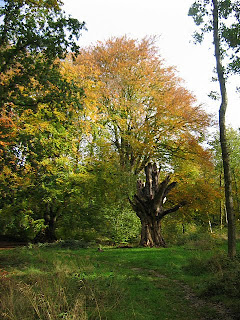Tuesday, 27 December 2011
A walk along the Coventry Canal
Monday, 26 December 2011
Christmas Day in the Cotswolds
Thursday, 22 December 2011
Tuesday, 20 December 2011
Winter Sunshine and Wide Views
Anne
Walk the Landscape
Saturday, 17 December 2011
Winter Willow
An old willow in the winter sunshine beside the river in the Evenlode valley near Charlbury.
Best
Anne
WalkTheLandscape.co.uk
Friday, 9 December 2011
Saturday, 3 December 2011
Crossing the railway track
Crossing the Gloucestershire Warwickshire Railway track when walking from Cheltenham.
Best
Anne
walkthelandscape.co.uk
Sunday, 20 November 2011
The Oxford Canal Walk: Banbury to Heyford








Walking in Wiltshire: Salisbury
Saturday, 12 November 2011
Walking in Wiltshire: Avebury Stone Circle








Monday, 7 November 2011
Walking in Wiltshire: Savernake Forest
Savernake Forest near Marlborough, Wiltshire, offers 4500 acres of magnificent native trees, both young and old. Many are very old, and at around 1000 years old, the Big Bellied Oak claims to be one of the oldest in England - a young sapling around the time of the Battle of Hastings, it now it stands with an impressive 11m girth. In fact, it got so big, that in 2002, a corset was fitted to stop it splitting in half.

Legend tells that the devil will appear at midnight to anyone dancing naked around the Big Belly Oak, 12 times anticlockwise.

Tall beeches planted beside forest roads
Criss-crossed by tracks and avenues, this privately owned forest, managed by the Forestry Commission, is freely accessible to walkers although there are no public rights of way. The area is large enough for long walks of up to 10 miles.

The forest was first recorded in Saxon Charters in 934AD, and following the Norman Conquest in 1066 it passed into the care of the Norman Knight, Richard Esturmy. It was passed down through his family for 31 generations and for over 1000 years.

Henry VIII hunted there and, soon after the execution of Anne Boleyn, he was so impressed by the steward’s daughter, that he married her. Sadly, Jane Seymour, his only wife to give him a son, died in childbirth.

In the mid-18th century the area of forest reached 40,000 acres, ten times bigger than it is now. The head of the family at the time had risen in status to become Governor to King George IV, and employed the famous landscape designer, Capability Brown, to plant the beech avenues that run through the heart of the Forest. These include the Grand Avenue which, at 3.9 miles, is the longest tree lined avenue in Britain.
Contact us if you are interested in walking through this fantastic forest, full of history, folklore and wildlife.
Best
Anne
walkthelandscape.co.uk




























